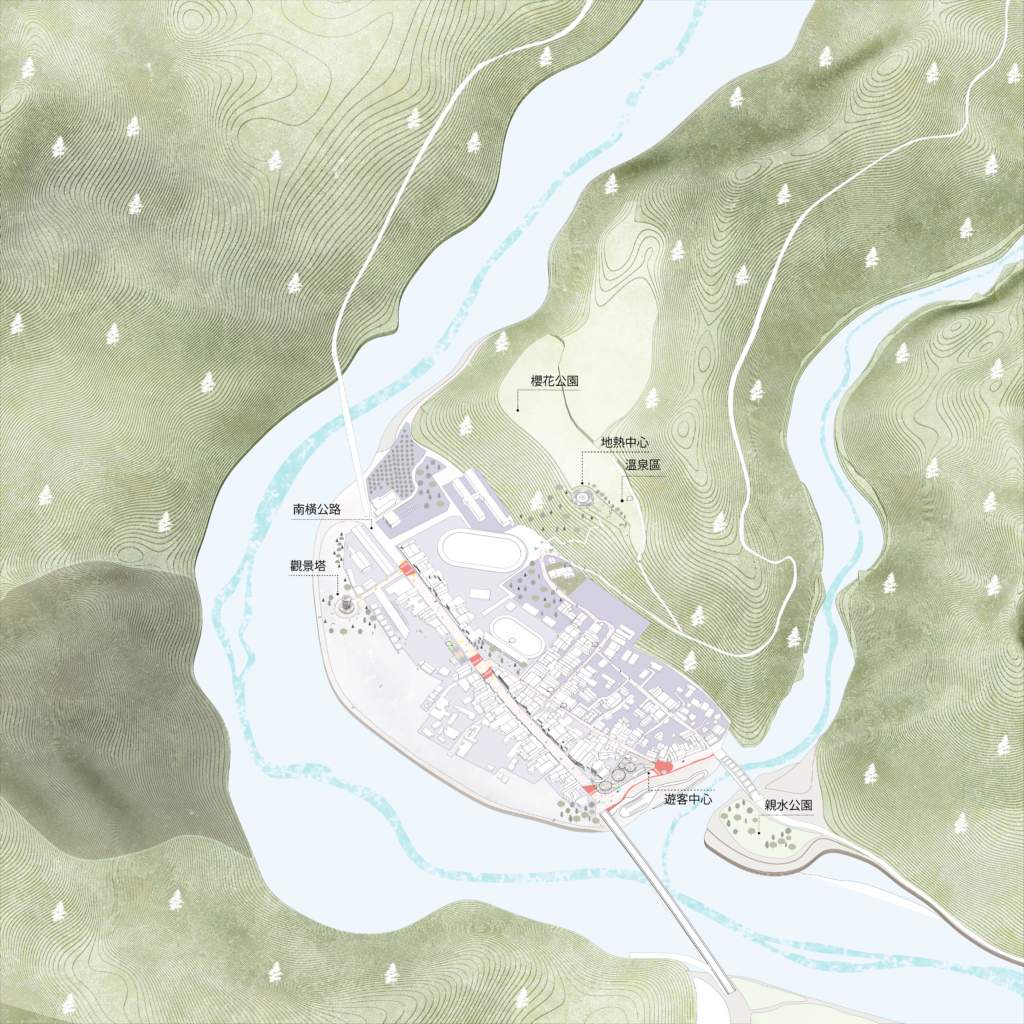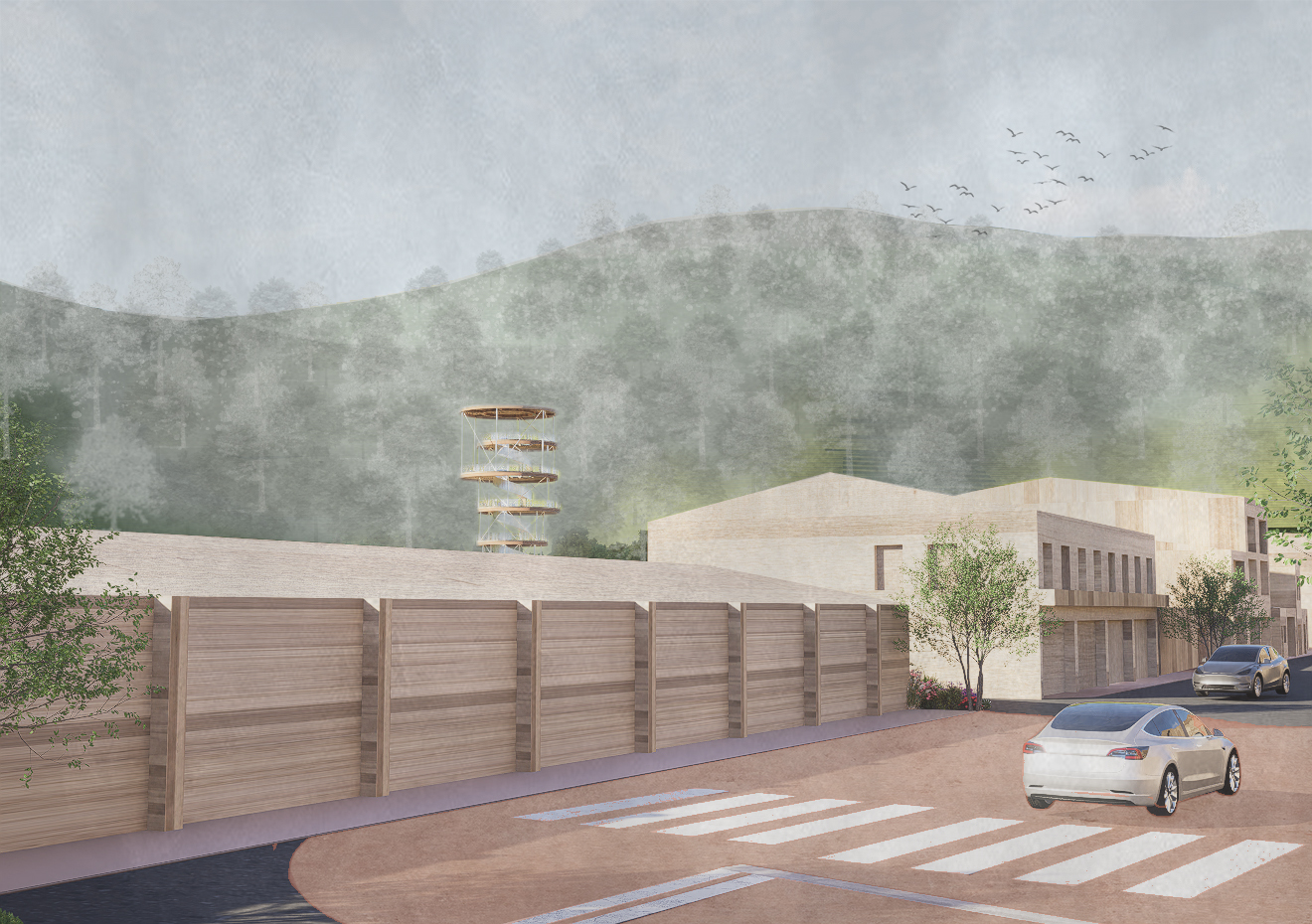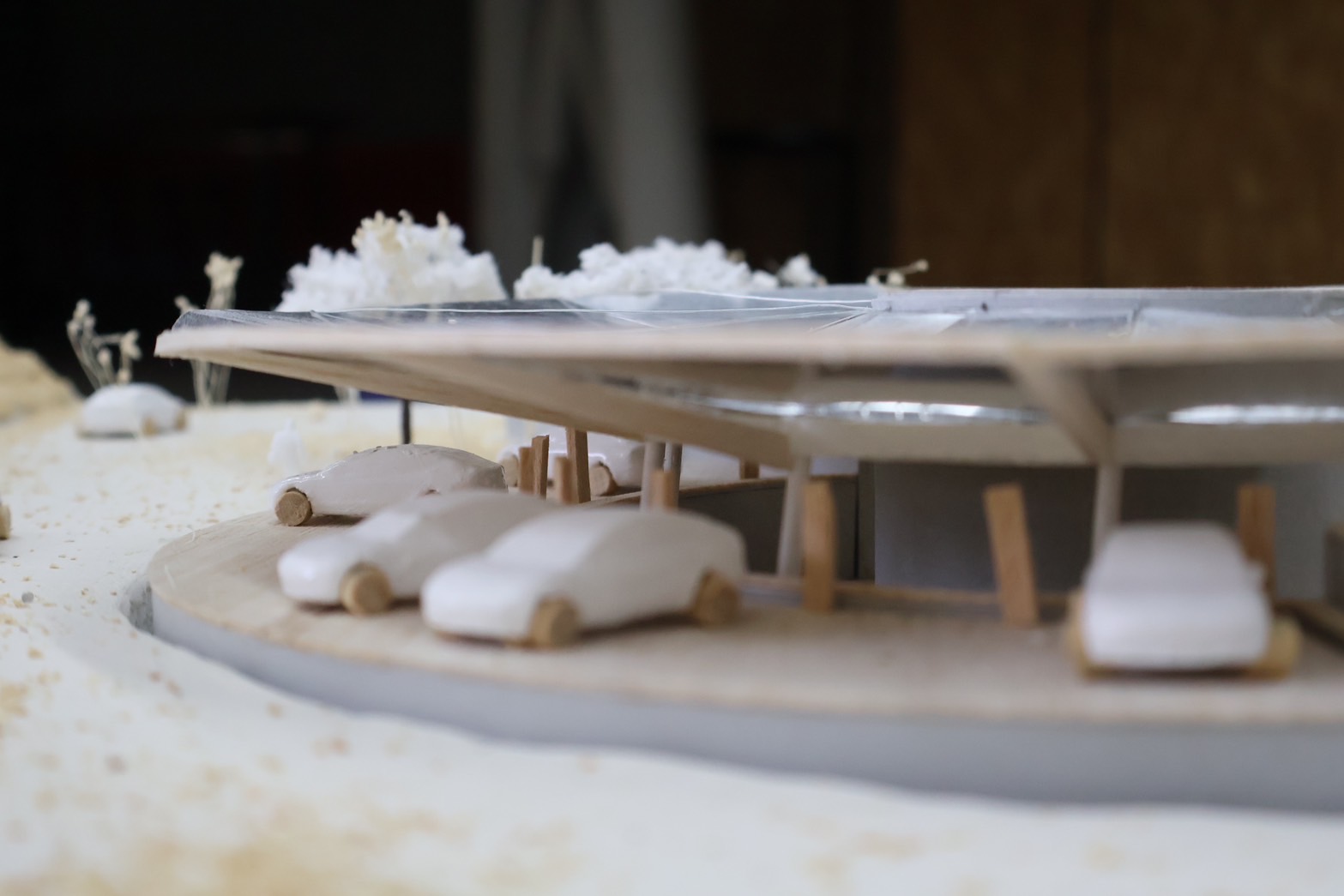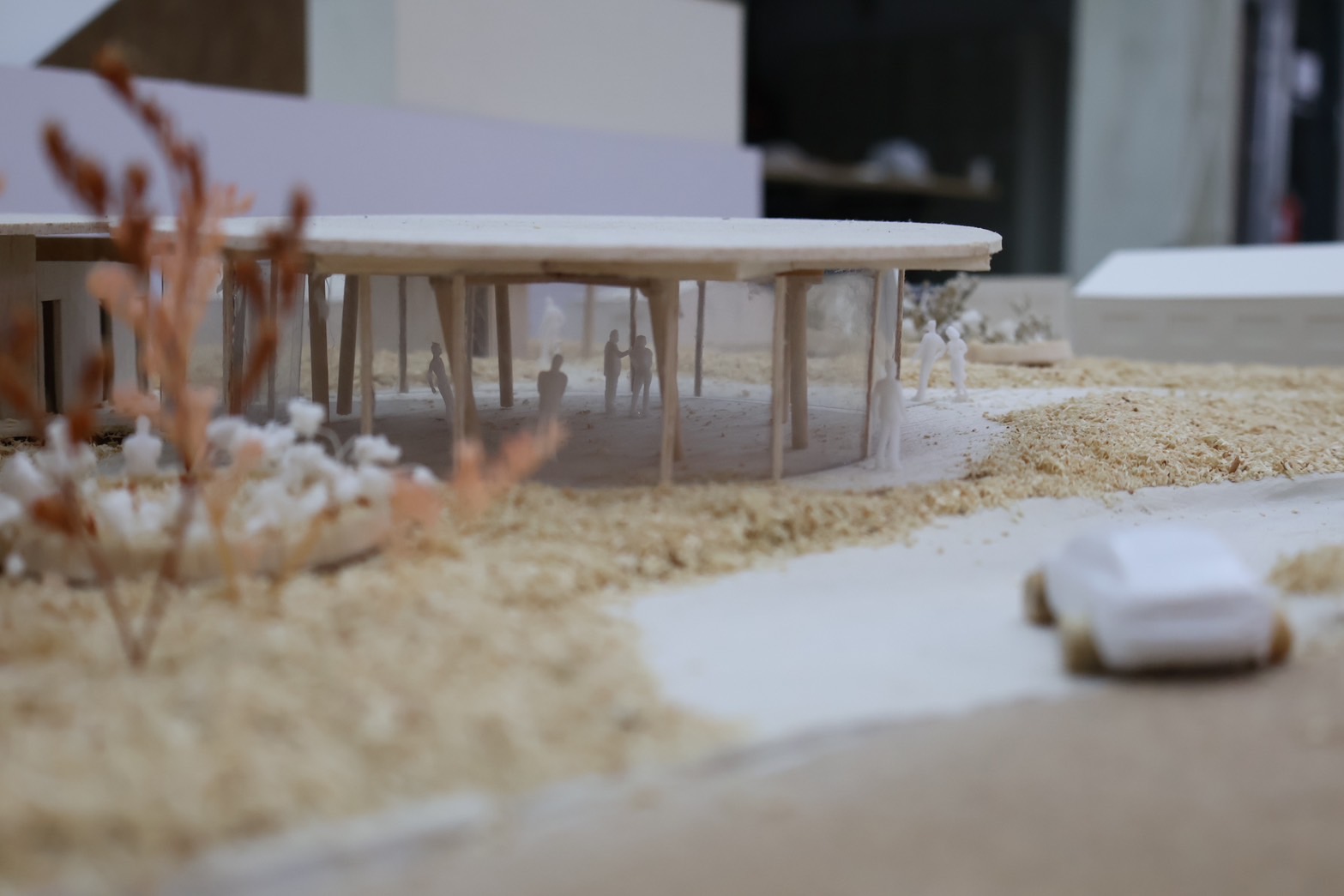自然導航
Natural Navigation
林孟萱


到深山旅遊時,我們該如何體驗自然,有沒有曾經失去方向的經驗?
設計說明
電動車的移動時代,人類該如何移動與停止?
基地
高雄市六龜區
2025 年臺灣再生能源應達到 20%、2040 年新售汽車全面電動化。
能源政策積極發展潔凈綠能,環境保護意識使得交通設施轉型,影響了人的移動方式,行動與使用行為產生改變。
過去,人類透過行走與周遭環境互動,但隨著快速道路的建設,旅者失去停下來的理由,被導航控制在線性移動中,而中繼點可以加強旅程的體驗與強化路途的異質性。
南橫是台灣三條橫貫公路之一,人們能迅速在幾小時內橫越高山至島的另一端。設計試圖以電動車導航所產生的新節點及等待充電時間的過程擾動旅程,讓車與人的速率轉換,重新討論旅程真正的意義。
Site
Liugui District, Kaohsiung City
By 2025, renewable energy in Taiwan should reach 20%, and by 2040, all new cars sold will be fully electric. Energy policies are actively developing clean green energy, and environmental protection awareness is driving the transformation of transportation facilities, affecting human mobility and changing travel and usage behaviors.
In the past, humans interacted with their surroundings through walking. However, with the construction of expressways, travelers lost the reason to stop and were controlled by navigation systems in linear movement. Intermediate points can enhance the journey experience and reinforce the heterogeneity of the route.
The Southern Cross-Island Highway is one of Taiwan’s three trans-island highways, allowing people to quickly traverse from the mountains to the other side of the island in just a few hours. The design attempts to use new nodes generated by EV navigation and the process of waiting for charging to disturb the journey, converting the pace of both cars and people, and reconsidering the true meaning of the journey.





